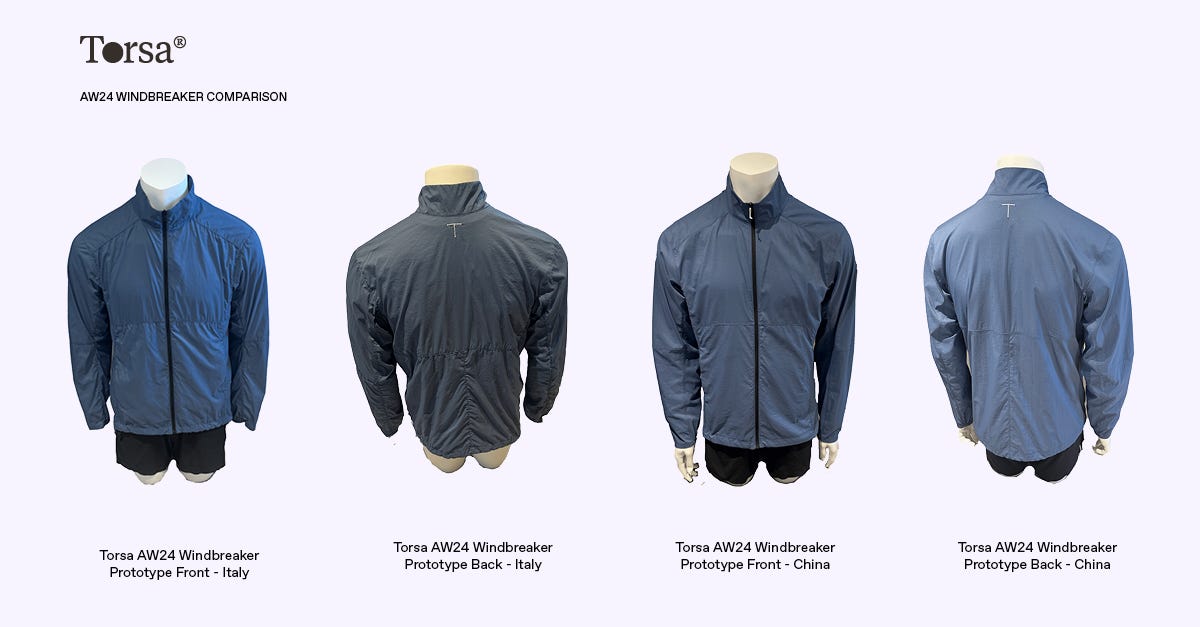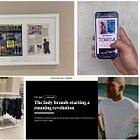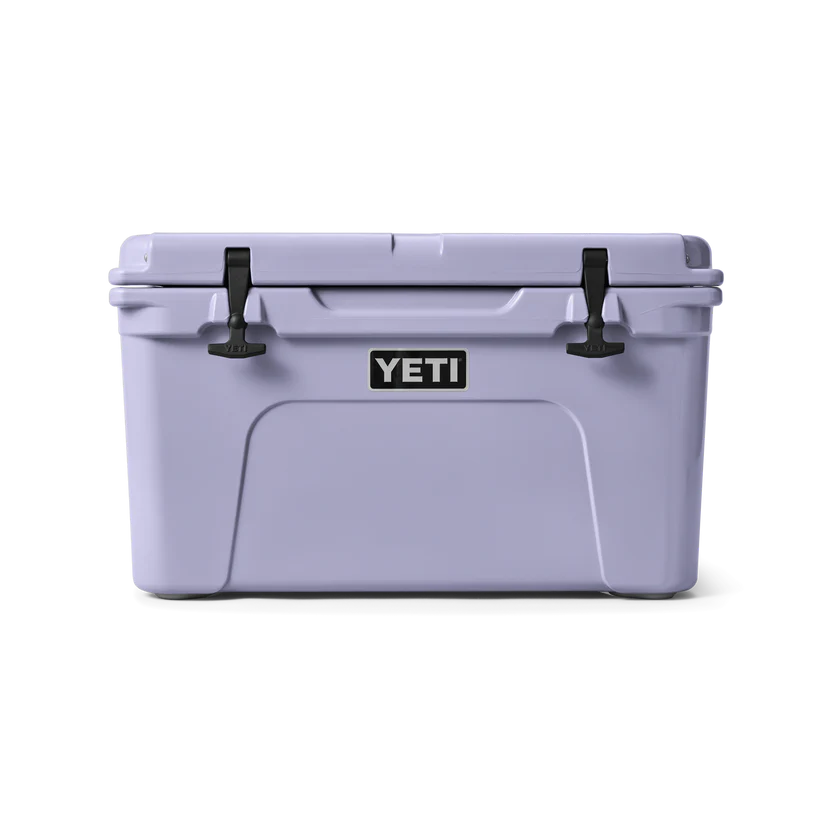How to Create a High Quality Product in Sportswear.
What goes into building a high-quality product in sportswear? Here are my tips and insights from my time at Torsa.
Hi and welcome back to Friday Thread. This week, I am exploring the aspect of product quality, what it is, and how to achieve it in sportswear.
Topics
🏬 Tips on finding the right factory
🧵 Fabric sourcing tips
⛰️ A YETI case study and how quality defines their core business
🥼 The importance of product testing and how to navigate as a start-up
🥇 Why quality comes down to your commitment
As I stand reviewing our AW24 samples - seeing the progression from prototype 1 to prototype 3 - I am struck by just how hard it is to develop a product I am truly happy with. I’ve worked with a truly world class designer, a developer with decades of experience, but the product still isn’t right. Threads are loose, our new signature Merrow stitch has puckered the fabric, and trims such as the drawcord are poorly finished.
There is no doubt I am a perfectionist when it comes to product. I am used to wearing a lot of Japanese brands such as Auralee, Snow Peak, Goldwin and Kapital - in which, not surprisingly, the product is beautifully made and finished. Naturally, I don’t have the resources of these brands, nor the in-house atelier, product and development teams, and array of specialists afforded to them. I am persistent when it comes to quality though, and it’s something that has always been a non-negotiable for me when building Torsa.
So, in light of this, how do you actually build a high-quality product?
Finding the factory
One of the most important decisions you can make for your product is choosing the right factory. However, what I have come to learn over time is when you’re building a range of products, one factory shouldn’t do it all. For AW24, I initially placed our 7-piece collection in Portugal. I thought they would be able to pick up our knit and woven styles pretty easily.
After an initial hand off call detailing everything on each style, tech pack handover, we waited for the first samples to arrive. They weren’t what was expected. I asked myself whether I made a mistake in the communication? Were things too complex? Did the tech packs not clearly demonstrate the right construction techniques? I’d like to caveat this by saying this factory is very good - you don’t become the main manufacturer for many big brands, and produce for global brands if you don’t have the know-how or knowledge, but this goes to show just how hard creating quality product is.
For me, product is all about detail. I care deeply about how the product is executed from both a design, but also construction standpoint. Our AW24 run shorts were placed in a factory who had all the capabilities needed to produce a well-refined product, but the initial sample didn’t live up to that expectation.
Of course, this is why you go through the product development stage to fix these mistakes. However, ideally you want to find a factory that executes what you put in the tech packs as close as possible. That way, you reduce the amount of samples that need to be produced, which is both a huge benefit to you as a brand, but also the factory itself.
Through my experience as a small brand, having not invested any capital into stock yet, factories tend to take shortcuts in sampling. This isn’t a quip about factories. In fact, I am very grateful that they spend their time and resources making samples (creating patterns, ordering materials, cutting and sewing, quality checking). However, it’s something to bear in mind. Don’t expect your first sample to be perfect. You want to clearly articulate your product through your tech packs, reference images, accurate CAD’s, construction details etc. Even then, there will be changes to the first prototype.
For sportswear brands, it’s important to work with factories that specialise in specific garments. For AW24, we placed our windbreaker with a fantastic factory in Italy. It produced down jackets for Herno, technical pieces for Prada Red Line and outerwear for a number of other very famous outerwear brands. When we placed the windbreaker with them, they followed our instructions, CADs, tech packs closely. However, they struggled with the lightness of the jackets fabric, which resulted in puckering at the seams. In the meantime, we placed that same jacket in China at a factory that had produced down jackets for Fjällräven and outerwear pieces for NN07. When we received the China sample, I was blown away by their ability to handle the fabric, which subsequently resulted in an incredible finish to the new jacket.
My main point here is that even though Italy had all the machinery and capabilities to produce high-quality outerwear, the factory in China excelled with handling and sewing the featherweight nylon fabric.
Insider knowledge
When visiting a factory, don’t just evaluate them by who they have worked with in the past. Evaluate their capabilities by what specific type of product they have created for that brand. In order to create high-quality product, you want to find factories that are experts in that type of product.
Fabric Sourcing & Testing
There is no doubt, fabric sourcing is an integral part of creating a high-quality product. In my most recent article I spoke about fabric and how the price of a fabric doesn’t necessarily reflect its quality, with reference to the wonderful Pertex® fabrics.
That said, start-ups will rarely get the opportunity to work with brands like Pertex®, Polartec®, GORE-TEX and so on. The MOQ’s are too high and they are traditionally reserved for brands that can commit to big volumes. There is, of course, countless of other incredible fabric suppliers and technologies on the market, but choosing the right fabric depends on multiple factors.
The Product Design
When choosing a fabric for your product, the first thing you need to determine is what the product is being used for. Let’s say you’re building a Merino running t-shirt for cool to mild conditions. There’s not much point sourcing a lovely superfine Merino fabric if its 220gsm. That may be perfect for running in conditions below zero, but not for mild conditions. Many customers will certainly group fit-for-pupose and function under the quality aspect.
This is why understanding your customer is such a crucial part of designing a high-quality product. Who is your customer? What do they value? What are they going to be using your product for? As a new brand, you want to be hyper-focused. Trying to build a product to cater for everyone, or every occasion always tends to be a losing battle. Sure, you may build a product that customer use for something else, but you want to build a product that you know will perform brilliantly in the setting it’s been built for.
Case Study: YETI
Looking outside of the apparel industry, YETI is a great example of building a high quality product which was initially born from necessity, when two brothers Roy and Ryan Seiders were seemingly frustrated by the subpar coolers available on the market. Their focus when they launched YETI in 2006, was to create a highly durable cooler with superior ice retention, targeting hunters, anglers and outdoor enthusiasts.
Of course, YETI has grown their product line significantly in recent years and built a highly profitable business. It still remains though, their core focus on quality has led them to where they are today. Its premium price point validated by its superior quality. Who wants a £300 YETI cool box - I know I do.
Testing
If you want to build a high-quality product, you simply have to test your products. Fabric mills lab testing is one thing, but wear-testing is where you’re really going to get the data you need to improve your product.
In sportswear, your product is going to be put through varying conditions. From sweat laden workouts to daily washes, your product will be put through the paces. Daily wear and use is something that fabric lab reports can’t really answer.
Make wear-testing part of your product development stage. As a small brand, it’s not easy. Samples are like gold dust and once you receive them, they usually go straight into a design review and a fit session. I recommend always getting two sets made up. One that you keep in-house and one that can be sent out into the field for testing.
Get a core group of target customers and get them to give their feedback on the product. If you’re short designed to use for you everyday 10k run for example, make sure that’s the distance they run. It seems obvious, but you want to get the most accurate feedback, and find people that are going to be honest with you. Ask mainly open ended questions. Here is a list of questions as an example;
Functionality and Performance
How did the shorts perform during activities of high intensity or long duration? Did anything support or hinder your run?
Were there any features of the shorts that stood out to you during your run?
How did the material feel against your skin?
Design and Aesthetics
What are your thoughts on the design and overall appearance of the shorts?
Were there any aspects of the design that you felt improved or hindered your run?
How do you feel about the length and cut of the shorts?
Storage and Features
Were the pockets (if any) useful and functional for your needs?
Did you find the storage options adequate for carrying essentials like keys, phone, or energy gels?
Are there any additional features you wish the shorts had?
Durability and Quality
After multiple wears and washes, how do the shorts hold up in terms of quality and appearance?
Did you notice any issues with stitching, fabric wear, or any other potential durability concerns?
Overall Experience
Can you describe any specific instances or experiences during your run that were directly related to the shorts?
How would these shorts compare to other running shorts you've worn in the past?
Would you recommend these shorts to a friend or fellow runner? Why or why not?
Improvements and Suggestions
If you could change one thing about the shorts, what would it be?
Are there any specific features or design elements you believe should be added or removed for a better experience?
What suggestions do you have for improving the overall wear and functionality of the shorts?
Bear in mind, this is an extensive list of questions. I don’t expect you to use all of them, but pick some which you believe would be most useful related to your product and customer, and go from there.
Final Thread
Ultimately, the quality of your product comes down to your commitment. Are you committed to working with the best people, the best factories? Are you committed to make minor changes if it means more time and money on another round of sampling? Are you committed to wear-testing every product if it means it gets to market slower? These are the questions as a start-up I know I have faced, and ones I am sure you’ll face too.
Quality is something I value highly when I buy products, so it’s only natural to want to prioritise it for Torsa. Granted, I don’t have the resources or systems in place to guarantee quality right off the bat, but I go through the processes to achieve it with the resources and capital I have.
High-quality products are not easy to build, especially with something as functional as sportswear. There are steps to ensuring you give yourself the best opportunity though.
High quality products have such an array of benefits for your business. From enhancing your brand reputation, word-of-mouth marketing, and increased customer retention, prioritising quality is crucial to a premium brands success. People are happy to pay more for quality - that is why YETI and countless other brands have been so successful whilst operating as one of the most expensive in the market.









